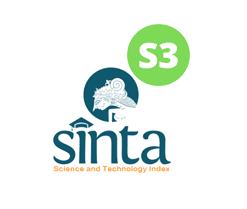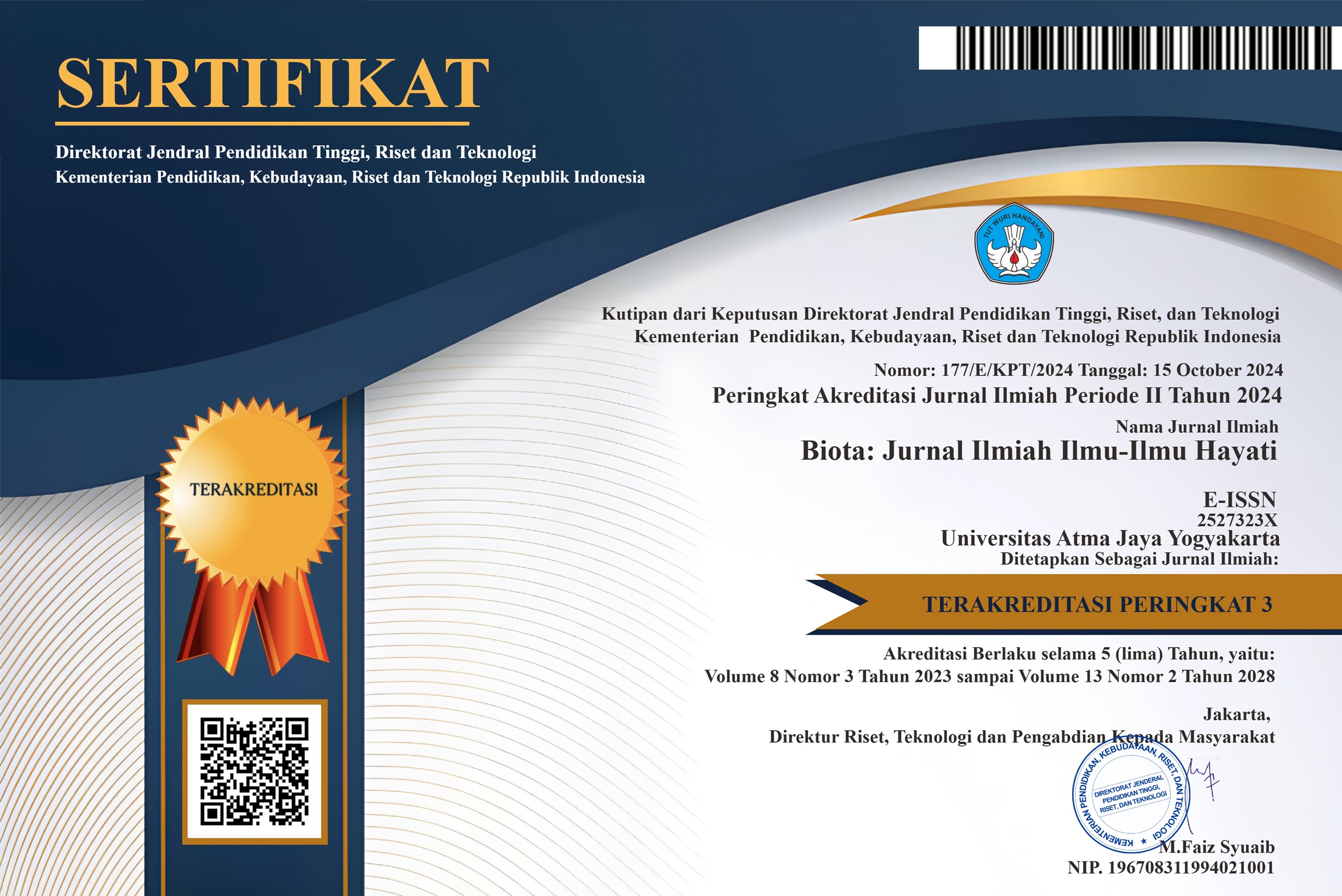Distribusi Southeast Asia Ovalocytosis (SAO) pada Berbagai Populasi Masyarakat di Kepulauan Sunda Kecil
DOI:
https://doi.org/10.24002/biota.v9i2.2897Keywords:
, SAO, Lesser Sunda islands, malaria endemicAbstract
The presence of some genetic markers related to malaria as hemoglobinopathies, enzymophaties and ovalocytosis in populations of Lesser Sunda Islands are presumed to be quite high, since this archipelago is mostly malaria endemic. To elucidate the problem, a series of observations had been done among 579 blood samples which were collected from five different populations (Balinese, Sasak, Sumbawanese, Sumbanese, and Alorese) representing inhibitant of Lesser Sunda Islands. In this paper we present the distribution of Southeast Asia Ovalocytosis (SAO) which was detected by microscopic examination of the red blood cell morphology. Among these, 38 subjects were suspected as SAO whereas the incidence ranges from 2.2% in Balinese to 15.7% in Alorese. It was predicted that the high incidence of SAO in Alorese might be associated with malaria selection to compensate the absence of hemoglobinophaties in this population.
Downloads
Published
How to Cite
Issue
Section
License
Authors who publish with Biota : Jurnal Ilmiah Ilmu-Ilmu Hayati agree to the following terms:
- Authors retain copyright and grant the Biota : Jurnal Ilmiah Ilmu-Ilmu Hayati right of first publication. Licensed under a Creative Commons Attribution-NonCommercial 4.0 International License that allows others to share the work with an acknowledgment of the work's authorship and initial publication in this journal.
- Authors are able to enter into separate, additional contractual arrangements for the non-exclusive distribution of the journal's published version of the work (e.g., post it to an institutional repository or publish it in a book), with an acknowledgment of its initial publication in Biota : Jurnal Ilmiah Ilmu-Ilmu Hayati, and as long as Author is not used for commercial purposes.












